This post contains minor spoilers for the film The Diving Bell and the Butterfly (2007)
My previous SciEntLab blog post examined the ways in which disturbances of memory and consciousness caused by neurological damage have been depicted on film. The post explored the cinematic portrayal of a fictional character, Leonard Shelby, with profound anterograde amnesia in Christopher Nolan’s Memento (2000). In contrast, this post – the second in a series of two – will focus on the imagination and memory of an actual person called Jean-Dominique Bauby who survived a severe cerebrovascular accident (stroke) that caused irreparable damage to his brainstem. More specifically, I will examine how Bauby’s imagination and memory were portrayed in Julian Schnabel’s critically acclaimed film The Diving Bell and the Butterfly (2007).
As the eminent neurologist Oliver Sacks so eloquently explained and demonstrated, patient narratives or ‘stories’ constitute a rich and valuable resource for those directly affected by neurological conditions as well as medical practitioners and researchers in the medical humanities and other fields. Directors Nolan and Schnabel were not interested in simply communicating medical accounts and scientific knowledge about patients. Instead, they brought patient stories to life on the big screen, using innovative cinematic and narrative techniques that engage the imagination of audiences and in their own way break the fourth wall. The films discussed in this post and the earlier one offer new vistas and ways of conceiving the lived experience of people with neurological damage and, perhaps, challenge the preconceptions and limitations of those with intact neurological systems.
Adapting Jean-Dominique Bauby’s memoir Le Scaphandre et le Papillon for the Big Screen
Like Memento, The Diving Bell and the Butterfly is a low budget ($14 million and filmed in 44 days) independent film that has been praised by clinicians and film critics, and often cited as a medically accurate portrayal of a rare debilitating neurological condition. The film is based on the memoir of Jean-Dominique Bauby stroke survivor and former editor in chief of the prestigious French fashion magazine Elle. In late 1995, at the age of 43, he suffered a massive brainstem stroke that left him completely paralyzed. On awakening from a coma twenty days after his stroke, Bauby was unable to move, breathe, swallow, or carry out other bodily functions without medical assistance. At Berck-sur-Mer maritime hospital on the northern coast of France, he was diagnosed with locked-in syndrome (LIS or sometimes referred to as pseudocoma) – in spite of his permanent paralysis he could still manage to move and blink his left eye. His senses of vision, hearing, touch, and intellectual faculties were intact. French director Jean-Jacques Beineix made a remarkable 1997 television documentary Assigné à Résidence (“Locked in Syndrome”) that includes scenes of Bauby with his speech therapist Sandrine Fichou and others such as Florence Ben Sadoun who provided his care.
Jean-Do, as he was known to his friends and called in the film, worked closely with Fichou and learned how to communicate by blinking his left eyelid to identify component letters of words as she recited the alphabet again and again (partner-assisted scanning). Remarkably, he managed to compose and dictate his memoirs to freelance editor and ghostwriter Claude Mendibil using this technique. The book was completed after two months of writing – which involved translating around 200,000 blinks into 137 pages of prose – and a further two weeks of editing. The French edition Le Scaphandre et le Papillon and English translation by Jeremy Leggatt (The Diving Bell and the Butterfly) were published in 1997 and received popular and critical acclaim by literary critics, clinicians, scholars, and welcomed by patient advocacy groups such as the Association du Locked-In Syndrome (ALIS).
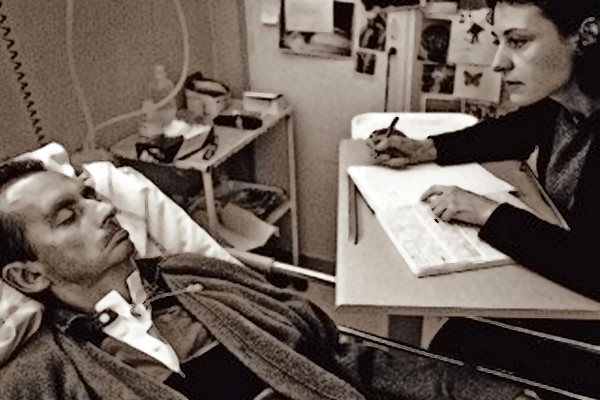
The original French title refers to Jean-Do’s use of two metaphors to juxtapose his overriding experiences after the stroke – feeling of trapped like a prisoner in an inert body or a profound sense of absolute freedom to travel through time and space. Although ‘scaphandre’ was translated into ‘diving bell’ in the English publication, the term ‘diving suit’ is also in keeping with Jean-Do’s account of how his paralysis felt like being a deep sea diver completely immobilized inside an invisible device that shrouded his entire body. Conversely, he used his memory and imagination to escape from the confines of his physical immobility and experienced episodes of unbridled joy or jouissance – fleeting and intense sensations of freedom, unrestrained mobility, and vertiginous pleasure – that he likened to a butterfly fluttering. In the prologue, he describes times when “My diving bell becomes less oppressive, and my mind takes flight like a butterfly. There is so much to do. You can wander off in space or in time, set out for Tierra del Fuego or for King Midas’s court.”
The eponymous and highly praised screen adaptation of Jean-Do’s memoir was written by British screenwriter Ronald Harwood and directed by American artist, sculptor and filmmaker Julian Schnabel. Le Scaphandre et le Papillon premiered at the Cannes Film Festival in 2007 and an English version The Diving Bell and the Butterfly was released in the UK the following year. The film has been widely judged a critical success by both the independent film sector and commercial film industry and the crew and cast have garnered many prestigious awards at film industry events and festivals. The film has also received considerable attention by clinicians, cinema and media researchers and scholars from other disciplines such as bioethics and literary studies.
As mentioned above, clinicians and neuroscientists have consistently praised the film, especially with regard to the way in which the filmmakers managed to create a compelling and medically accurate portrayal of brainstem stroke survivors with locked-in syndrome. What makes the film adaptation of The Diving Bell and the Butterfly particularly relevant here is how the filmmakers used a combination of cinematic imagery, narration, sound, and music to convey Jean-Do’s lived experience following his stroke, particularly his recollection of long-term autobiographical memories. The screen adaptation is also highly instructive in terms of illuminating how the medium of film has been used to portray the interplay between memory and imagination as well as altered states of consciousness following severe traumatic brain injury.
Neurology meets La Nouvelle Vague
At the time of making the film, Julian Schnabel was a successful visual artist and his painterly skills in, for example, the use of colour, composition, and form, were augmented through his close collaboration with the experienced Polish-American cinematographer Janusz Kaminski and French film editor Juliette Welfling. Whilst the aesthetics of Christopher Nolan’s Memento are clearly influenced by film noir, Schnabel’s film includes many references to French Nouvelle Vague (New Wave) cinema, for example non-linear storytelling, hand-held camerawork, location shooting, self-reflexivity, improvised direction and narration, and the notion of film as an expression of the director’s creative vision (auteurship). In addition, Schnabel’s selection of music for The Diving Bell and the Butterfly features genre classics such as the main theme in Truffaut’s (1959) Les Quatre des Coups (“The 400 Blows”) composed by Jean Constantin. In many ways, The Diving Bell and the Butterfly is a tour-de-force in terms of incorporating a wide range of cinematic and narrative techniques to provide audiences with an intimate and sensual portrayal of how Jean-Do’s neurological condition affected his ability to remember, imagine, and communicate.
In contrast to Nolan’s technique of partitioning and reassembling the narrative structure of film sequences to portray Leonard’s severe short-term memory loss in Memento, Schnabel enlisted Kaminski and other members of the film crew, notably editor Welfling and a unique ensemble of talented actors, to depict not only the transience and fragility of Jean-Do’s memories but also the extent to which memories are malleable, multilayered, and merge with products of the imagination or phantasies. Although the film is clearly based on Jean-Do’s memoir and unique personal relationships, it also referred to psychological and social processes that underlie our understanding and experience of memory more generally.
In essence, Schnabel’s film portrayed the conscious recall of memories as a creative process deeply embedded in time, location, and culture. The act of remembering – both in private and public contexts such as watching films with others at the cinema – was framed as not simply a function of the brain but, rather, a practical embodied skill and aesthetic experience. In the case of observing Jean-Do’s memories in the film, audiences witness slippages between memory and imagination during poignant scenes that portray his multifaceted personality and lived experience as a survivor of brainstem stroke, father, husband, lover, friend, associate, fashion magazine editor, cantankerous patient, writer, and bon vivant.
Professor of English film and Theatre Jonah Corne provided a wonderful description of memory sequences in the film as ‘a smattering of intercut images representing the incipient churnings of his [Jean-Do’s] memory and imagination, and coming and going as rapidly as the butterfly’s wing.’ What follows is a brief summary of what I make of these aptly named ‘incipient churnings’. Due to limitations on the size of this blog post and to avoid spoiling the film for readers who haven’t yet seen it, I’ll focus on one scene that incorporates just a small sample from the myriad of cinematic techniques and skills utilized by Schnabel, Harwood, Kaminski, Welfling and the cast to convey how Jean-Do experienced the act of remembering and the way his memories were inflected in and through imagination.
Memories as layers, visual echoes, and textures
At one point in the film, Jean-Do emerges from a bout of depression and experiences an epiphany. The outdoor scene consists of a long shot of the hospital building at Berck-sur-Mer and Jean-Do sat outside, swaddled in blankets in his wheelchair, communicating with his speech therapist Henriette (played by Marie-Josée Croze). A voiceover (Jean-Do’s as played by Mathieu Amalric) narrates how he has come to realize that it’s possible to re-imagine the limitations of his immobile body and escape the all pervading sensation of being trapped inside a diving bell by using two things he still has the power to control (that is, in addition to the ability to blink his left eyelid): memory and imagination. Schnabel combined cinematic imagery, voice, and sound score used to encapsulate the unmitigated pleasure and transformative power of Jean-Do’s memory and imagination (see video clip below).
Kaminski created images for this scene using a combination of special camera lenses and a modified Arri 435 camera with a hand-crank to vary the film speed – winding the film backwards and forwards to produce multiple exposures on the negative. He used the technique to manipulate not only the movement of objects in the shot, but also under- and over-expose the film to create composite imagery that consist of exquisite diaphanous layers, complex textures, and ghosting effects. Kaminski created a host of different layering effects for this scene and others in The Diving Bell and the Butterfly to illustrate the simultaneity of image in time and space. The effects were meant to communicate the experience of Jean-Do’s disordered memories and misremembering by showing multiple and slightly misaligned perspectives on screen. In short, cinematic sequences that looked like they were created with a slightly faulty camera or display technology implied that Jean-Do’s neurological damage and memory processes were analogous to a finely calibrated optical instrument in need of repair.
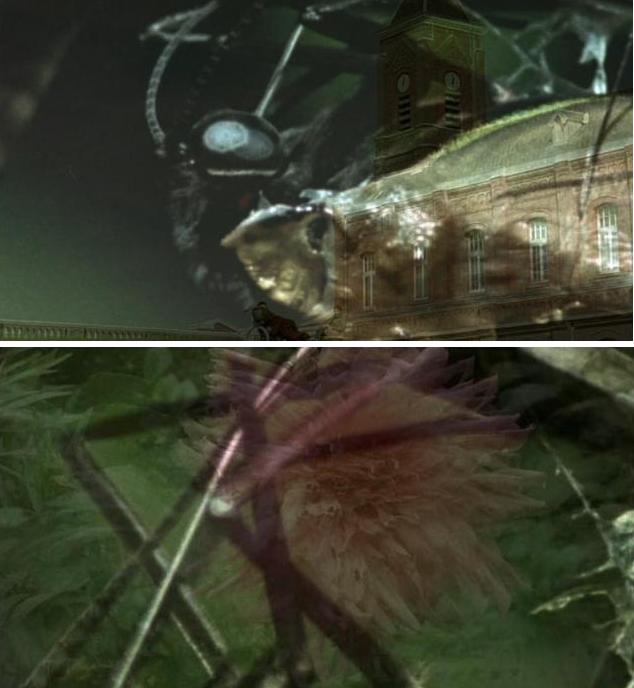
Incidentally, other filmmakers and artists have exploited the material properties and defects – surface scratches, faded colours, stuttering movements – of amateur movies shot on celluloid film, especially home movies shot using hand-held cameras and small gauge formats such as Super 8 film, to depict the passage of time and gradual erasure of memories or, perhaps, the unreliability of memory recall. American filmmaker and multimedia artist Bill Morrison is one of the most talented and influential figures working with archival film and found footage to explore the historicity of film as a medium and its relationship to notions of memory, time, and decay. Portuguese filmmaker Pedro Maia has produced some fascinating work exploring the medium of analogue film and memory. In the world of experimental cinema, Austrian filmmaker Peter Tscherkassky has created some astonishing films using a combination of celluloid film and psychoanalytic theories to interrogate the medium of film and its relationship memory and identity.
Early parts of the imagination and memory montage scene in The Diving Bell and The Butterfly include an extreme close up of butterflies emerging from their chrysalides and fluttering across a meadow of wild flowers. Schnabel obtained stock footage of different species of butterfly from archival sources and made a selection for the montage based on attributes such as the movement and colour of wing markings. His commentary on The Diving Bell and the Butterfly DVD his choices might sound arbitrary – “I didn’t want to have orange ones. I like this green and white spotted one”. However, it’s worth remembering that Schnabel is primarily a painter and skilled in manipulating colour and texture to create images on a canvas using paintbrushes or the surface of film using cameras. For Schnabel, canvas and celluloid film are flat surfaces on which colours can be applied in single or multiple layers. Indeed, he and other members of the film crew used many different types of layering techniques during the filming and editing of the butterfly sequence and other scenes.
Memories, cinematic montage, and photography
Juliette Welfling’s unique skills and talent as a film editor are also evident in the carefully paced montage sequence, in which she draws on cinematic techniques developed by early Soviet filmmakers such as Sergei Eisenstein and Lev Kuleshov. Welfling combined Kaminski’s multi-exposure footage with excerpts from other sources as well as photographs. Film and static images in the montage are presented in rapid succession, including stock film footage of butterflies and spectacular landscapes, documentary style travelogue film, black and white photographs of Marlon Brando, family photographs and home movies of Amalric playing the role of Jean-Do with his on-screen friends before he suffered a stroke. The symphonic and partly jaunty score for the scene is taken from Eduardo De Filippo’s 1950 Italian comedy film Napoli milionaria (Millionaire Naples). The beautifully constructed montage expressed the notion that memories are rooted in time, but through the process of remembering they are embellished by the imagination to constitute personal and collective experiences.
The conflation of memory and imagination is exemplified by the incongruous inclusion of Marlon Brando photographs in the montage sequence. The narrator, Jean-Do alerts the audience to this imposter memory “Now I’ll remember myself as I was. Handsome, debonair, glamorous, devilishly attractive (…) That’s Marlon Brando, not me!” The flow of images in the montage instantly switches to footage of a solitary intrepid skier hurtling down a snow covered mountain, and the narrator declares exultantly “That’s me”. The montage continues with what appear to be autobiographical memories – rather than products of the imagination – such as home movies and family photographs of Jean-Do tracing his life from adulthood to infancy. The montage scene ends by a simple cut showing a close up of Jean-Do’s face as he’s being transported back into the hospital.
“That’s me”: Slippages between, imagination, memory, and identity
The montage is meant to portray Jean-Do’s deeply personal epiphany or realization that his imagination and memory can be used to forget the limitations of his paralyzed body and transport him anywhere in time and space. On first glance, the montage consists entirely of images that provide the audience with a privileged view of Jean-Do’s imagination. The butterflies denote flight from his immobility, fluttering nonchalantly through scenes of distant places and intimate encounters originating from his deepest desires and phantasies. By contrast, his autobiographical memory is revealed in a flurry of family photographs and home movies with family and friends before he suffered a stroke.
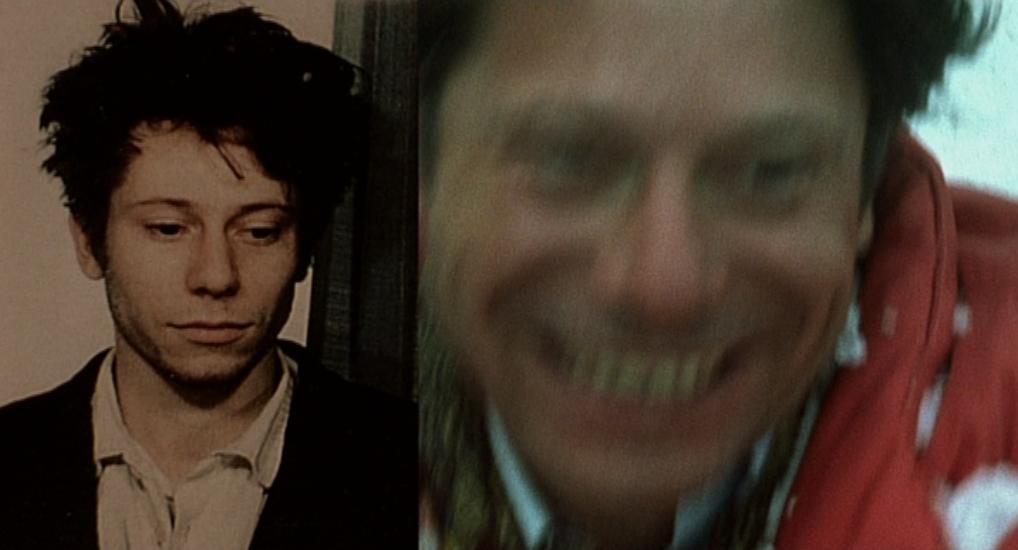
However, the portrayal of Jean-Do’s imagination and memory in the montage sequence is also deeply enmeshed with Schnabel’s own autobiographical memories of personal experiences, family relationships, anxieties, and aspirations. For instance, the montage includes footage of anonymous large sculptures on a snow covered landscape. The sculptures were created by Schnabel and filmed by his friend Brian Kelley in 1991. Whilst Kelly’s film Hotel Chantarella is ethereal, its relationship to Jean-Do’s imagination and memory is, at best, tangential. In interviews, Schnabel often mentions he was a personal friend of the late Marlon Brando and was keen to collaborate with him on film projects. Indeed, as the Art Gallery of Ontario website has noted Brando is a “movie figure who looms large in the psyche of Schnabel”. The photographs of Brando in the montage are taken from Schnabel’s personal collection.
In one sense, by interleaving his photographs of Brando into the montage of Jean-Do’s imagination and memory on-screen, Schnabel managed to fulfil his wish to collaborate with Brando on a film project. Schnabel depicted additional lifelong passions of his own such as surfing and tacitly ascribed them to Jean-Do in the montage sequence. The memories on display in the montage and other parts of the film reveal slippages between imagination and memory on many levels, and constitute another way in which memories are presented to the audience in multiple layers that are infused with (auto)biographical details, emotion, history and, not least, imagination. Schnabel employed cinematic techniques, narrative, and music to capture not just the content or meaning of memories but also the emotional and aesthetic aspects of memory as a process. He anticipated the audiences’ familiarity with photographs, amateur films, and Hollywood productions as everyday objects that are frequently used to record, store, and share memories.
Interestingly, it wasn’t just the filmmakers who recognized the connection between photographic images, cinema, and memory. In his memoir he referred explicitly to the importance of photographs as physical objects that have the capacity to evoke vivid memories and emotions. For instance, he was initially unable to fathom why his father sent him a childhood photograph taken at a miniature golf course, but on closer inspection it became clear why his father thought it was relevant. As Jean-Do recounted:
It would have remained a mystery had someone not thought to look at the back of the print. Suddenly, in my own personal movie theater, the forgotten footage of a spring weekend began to unroll, when my parents and I had gone to take the air in a windy and not very sparkling seaside town. In his strong, angular handwriting, Dad had simply noted: Berck-sur-Mer, April 1963.
Jean-Dominique Bauby (1997) The Diving Bell and The Butterfly
Evidently, long before the screen adaptation had been conceived, Jean-Do made a direct comparison between watching film footage in the movie theatre and recalling vivid memories of family ties, events, locations, and embodied experiences.
As we have seen, photographs are repeatedly used in Schnabel’s film to denote memories that connect Jean-Do with past experiences and constitute a practical means of sharing memories with others. Likewise, Polaroid instant photography plays a pivotal role in Memento as a visual prop for conveying to other characters as well as audiences how Leonard relies on photographs as substitutes or proxies for short-term memories. Both films use photographs, camera techniques, and editing to draw attention to memories as physical artifacts that constitute memories. In addition, the films frame memories as cultural objects rather than exclusively internal brain processes.
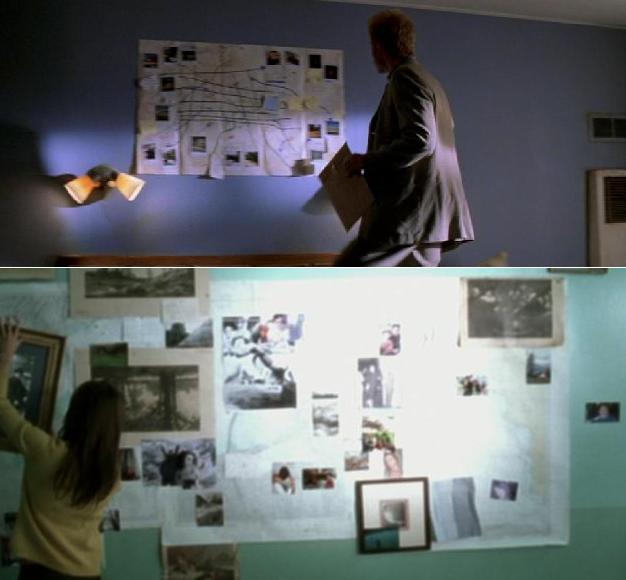
Closing comments
Schnabel has stated that making The Diving Bell and the Butterfly helped him come to terms with losing his father:
When my father died [2003], he was terrified of death. I felt like I had failed him because I couldn’t help him through that. I really made this movie, I think, as a self-help device. I’ve always had a problem with death. I think that Jean-Dominique Bauby actually helped me out a lot. I couldn’t help my dad, but I thought I could help somebody else. I really made it for my father.
In a real sense, Schnabel made the film in memory of his father as well as Jean-Do and this might well have contributed to the conflation of Jean-Do’s memories with his own on-screen. It seems reasonable to assume that one of the reasons why the film has been so warmly received is because the filmmakers and cast understood the emotional component of memories and managed to combine this knowledge with cinematic techniques that revealed the reciprocity of imagination and memory.
Director Julian Schnabel and cast discuss The Diving Bell and the Butterfly with interviewer David Poland. Click here for interview with the director, cinematographer Janusz Kamisnki, screenwriter Ronald Howard, and producer Jon Kilik.
Although Memento and The Diving Bell and the Butterfly have consistently been praised by clinicians and neuroscientists as exemplary in their portrayal of neurological disorders, the director on each of these films was wary of using medical sources to portray memories. Instead of relying solely on medical texts and advice from clinicians or neuroscientists to create characters who exhibit symptoms of neurological memory disorders, Nolan and Schnabel applied on their skills as filmmakers using cinematic and narrative techniques to simulate the perception and first-person sensory experience of patients with a neurological disorder, especially what it feels like to create and recall memories after sustaining severe brain damage.
Memento and The Diving Bell and the Butterfly are counterexamples of the claim by neuropsychologist Mary V. Spiers and others that filmmakers need to be educated by scientific experts to avoid creating and perpetuating ‘neuromyths’. Nolan didn’t use a medical or science consultant and only referred to medical literature as a starting point for his cinematic portrayal of a person with severe anterograde amnesia. Similarly, Schnabel and members of the cast such as Marie-Josée Croze consulted Jean-Do’s speech therapist and many other healthcare professionals who looked after Jean-Do at Berck-sur-Mer hospital, but he relied on his practical skills and talent as an artist and filmmaker – aided and abetted by a uniquely talented cast and film crew – to depict Jean-Do’s experience of locked-in-syndrome. Taking cues from Jean Do’s memoir and discussion with his family, intimate friends, professional colleagues, and healthcare providers, Schnabel used his intuition and personal experiences to portray the act of remembering as an aesthetic practice and emotional experience that incorporate subjective and collective perspectives.
The overwhelmingly positive reception of Memento and The Diving Bell and The Butterfly by healthcare professionals, patients, advocacy groups, lay audiences, media industry professionals, scientists, medical researchers, and scholars confirm that it is not necessary to have a huge budget and resources of the studio system to make an instructive and entertaining film about the lived experience and memories of a person with a severe neurological condition. Jean-Do’s memoir and these films elegantly demonstrate: imagination can carry us through time and space, but without memories we would lead solitary lives of quiet desperation, lost in an eternal present and strangers to ourselves.
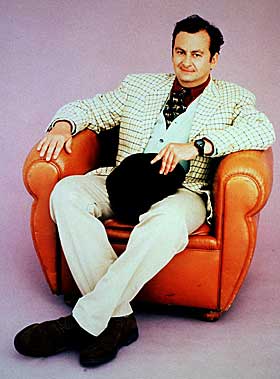
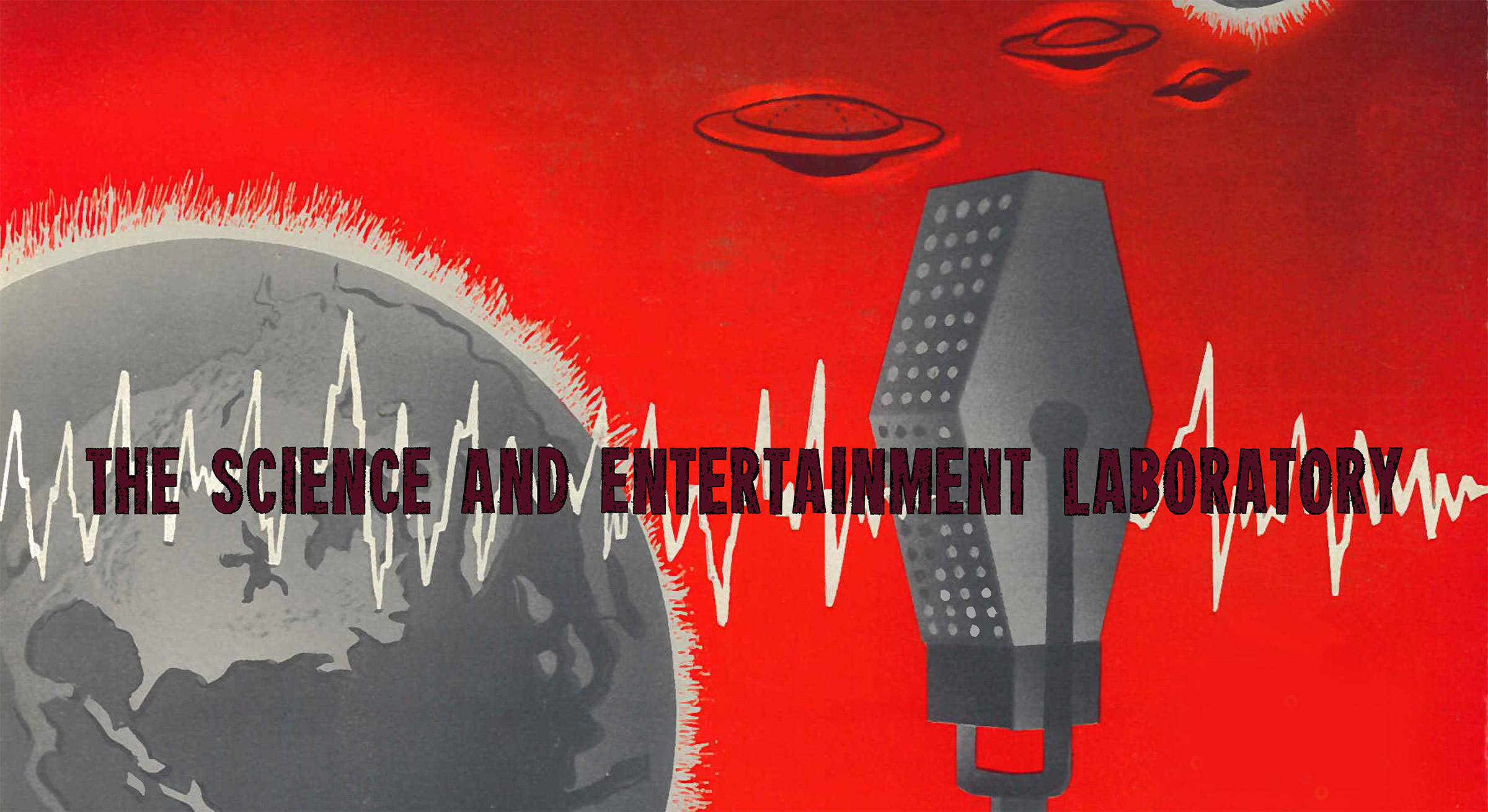
 Follow
Follow
1 comment for “Neurology Meets La Nouvelle Vague: The Flutter of Memory and Imagination on Film”